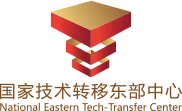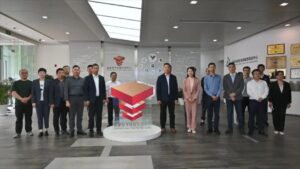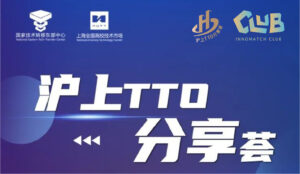In July 2005, Shanghai Jiao Tong University merged with Shanghai Second Medical University to establish the new Shanghai Jiao Tong University School of Medicine, which was jointly built by the Ministry of Education and Shanghai Municipal Government, and entered the ranks of "985" universities.
The School of Medicine contains 23 schools (departments) and 13 affiliated hospitals. It covers eight first-level discipline doctoral degree authorization points in biology, basic medicine, clinical medicine and stomatology, and four first-level discipline postdoctoral stations. There are eight years of clinical medicine (granting doctoral degree), eight years of clinical medicine (dentistry direction, granting doctoral degree) and seven undergraduate majors (clinical medicine, dentistry, biomedical science, preventive medicine, medical laboratory science, nursing, nutrition). Among them, clinical medicine, dentistry, medical laboratory science and nursing are national specialties; eight-year clinical medicine (French class), eight-year clinical medicine (4+4 masters and doctoral degrees), five-year clinical medicine (pediatric direction) and five-year clinical medicine (English class) are the special classes of the college.
1. Construction of tissue-engineered tracheal cartilage rings using Collagen/PLCL porous nanoscaffold materials containing Kartogenin
Based on the characteristics of normal tracheal cartilage rings in human body, we use coaxial electrostatic spinning technology to prepare a new type of scaffold material with active substances, so as to provide a stable and efficient microenvironment for inducing bone marrow mesenchymal stem cells into chondrogenic rings, to improve the induction efficiency, and finally combine with stem cells to obtain a more ideal tissue-engineered tracheal cartilage ring, which provides new treatment ideas for tracheal stenosis patients and has a broad clinical application. Prospect.
Technological innovation points:
1. The use of Kartogenin (KGN)-induced bone marrow mesenchymal stem cells (BMSCs) in combination with novel scaffolding materials to construct tissue-engineered cartilage can be expected to provide a continuous and stable cartilage tissue and avoid endochondral ossification.
2. The use of coaxial electrostatic spinning technology to prepare collagen/caprolactone porous nano-scaffold material with KGN will provide a stable and efficient microenvironment for the induction of BMSCs into cartilage, which is expected to improve the induction efficiency and obtain more ideal tissue-engineered cartilage rings, providing new therapeutic ideas for the majority of patients with tracheal stenosis, with broad prospects for clinical application.
2. Application of 3D printing technology in the diagnosis of congenital heart disease in children
The application of 3D printing technology in the field of medicine has become a hotspot of research at home and abroad. Shanghai Children's Medical Center has the most advanced research center for 3D printing medical digitalization for children in China. 3D printed models can be used for interpretation, surgical planning and simulation, which will ultimately benefit patients.
3D printing technology is the most widely used tool for future clinical procedures. For complex surgeries such as congenital heart disease, physicians often need to visualize cross-sectional imaging data into 3D spatial images to design surgical plans. Nowadays, 3D printing technology can be used to plan the surgical plan on the physical model, and customize the surgical patch, catheter and surgical guide in advance. Ultimately, the goal of precision medicine can be achieved.
3D printing related research has been published in 6 statistical source journals. He has applied for 3 major research projects at the relevant bureau level, Shanghai Jiao Tong University medical-industrial intersection, and Shenkang. The research results have been presented in the Annual Meeting of Radiology in North America, the Annual Meeting of International Imaging Technology, the Annual Meeting of Chinese Imaging Society, and the Annual Meeting of Digital Medicine of Chinese Medical Association. He used the ATLAS algorithm to accurately segment and extract the mathematical model, and the 3D printed tracheal cartilage external stent developed by him has applied for a utility model patent and passed the examination of the Intellectual Property Office. He attended an advanced training course on 3D printing technology hosted by Academician Dai Kiron and received a certificate from the Engineering Research Center of the Ministry of Education.
3、Development and research of GNA002, a new anti-cancer targeted drug.
In order to develop highly effective and low-toxicity chemotherapeutic agents against certain types of malignant tumors and to improve the survival rate and quality of life of patients with malignant tumors, this project selected EZH2, a key protein in malignant tumors, as a drug target and developed a series of specific anti-cancer drugs.
Through a high content screening platform, we found that the natural product, boswellic acid, could directly bind to the target and specifically degrade the cancer protein EZH2. We further investigated the structure-efficacy relationship between GNA002 and GNA002 and synthesized a series of GNA002 derivatives. One of the most active compounds, GNA002, had significant growth inhibition effects on hematological tumors, lung cancer, breast cancer, cervical cancer, ovarian cancer and head and neck cancer, and showed excellent pharmacokinetic and toxicological experiments. GNA002 is a new, targeted, oral EZH2 specific inhibitor with a wide range of clinical indications and market prospects.
The innovative drugs have been patented in China; international patents have been granted in six countries or regions, including the United States and Japan.
4. A skin expander that also provides bioadditive effects.
The present invention is a skin expander that can additionally provide a bio-additive effect, and during use, a biological agent such as a stem cell-rich cell suspension or cell growth factor can be infused into the treatment site of the skin expansion area via a network of additional tubes to accelerate the expansion growth of the skin; in addition, there are a number of burrs on the skin-side surface of the expansion sac for removing the biofilm formed between the expander and the inner surface of the skin, and Creating a minimally invasive wound is more conducive to biologic therapy, shortening the duration of treatment, improving the effectiveness of treatment and effectively preventing the complications of necrosis and splitting of the skin due to rapid expansion.
5. A super coagulation hook for laparoscopy
This utility model relates to a laparoscopic ultra-fine electrocoagulation hook, the electrocoagulation hook body shape is 90° curved, the electrocoagulation hook body is divided into three parts: the tip, the hook body turning point and the bottom of the hook body, the tip is a cylindrical shape with rounded surface and a diameter of 0.2mm , the diameter of the hook body turning point is 0.3~0.6mm, and the diameter of the bottom of the hook body is 1~1.5mm.
The advantages of this utility model are as follows: under the premise of maintaining the same toughness as the existing electrocoagulation hook, the interruption of the exposed metal part of the head becomes thinner and shorter, which can finely complete the separation and protection of tiny arteries such as the testicular artery during the operation of separating the testicular artery, and improve the work efficiency.
6. A laparoscopic vas deferens grasping forceps
The utility model relates to a vas deferens grasper for laparoscopy, including a jaw device, a jaw bar device, a rotating wheel device, a fixed handle, a swing handle and an electric plug, the jaw device being connected to the jaw bar device, the jaw bar device being set on the rotating wheel device, the fixed handle being hinged to the swing handle, the fixed handle having a handle holder, the handle holder being connected to the rotating wheel device, and the electric plug being connected to the handle holder.
The advantages of this utility model are as follows: simple structure, convenient and practical, reduced handle tensioning stroke, reliable grip, can grasp the vas deferens tissue at any angle, while effectively protecting the vas deferens lumen and increasing the success rate of spermatozoon reconstruction.
7, a group of auxiliary ultrasound high-frequency probes in the preoperative, intraoperative high precision positioning device
The research group has developed a group of devices that can improve the near-field image of high-frequency ultrasound probes and high precision locators for use with high-frequency ultrasound probes, which can greatly improve the scope of application of high-frequency ultrasound probes and improve image quality; it can make unbiased high precision fixation without relying on the experience of doctors. Both devices can be used as primary consumables to prevent poor infection, and their low production and approval thresholds facilitate timely conversion to the market.
The present invention is applicable to the precise locator used by high-frequency ultrasonic probes, which belongs to the field of ultrasonic inspection technology application. The utility model is a kind of water bladder suitable for use by multiple models of high-frequency linear array probes, which belongs to the application field of high-frequency probe inspection technology.
8. A child arterial blood collection fixation device
The fixing device includes a first fixing plate, a second fixing plate, a hand-shaped sleeve and an arm band, the first fixing plate and the second fixing plate are connected together by bolts, the second fixing plate is equipped with a fixing rod, a fixing table is provided at one end of the rod, and there is a through-hole on the fixing table with threads inside the through-hole, the hand-shaped sleeve and the fixing table are bolted together Fasten together to complete the role of a fixed child's blood collection arm.
The advantages of this utility model are: 1. it can help medical personnel to fix children's arms when collecting arterial blood, avoid children's resistance when collecting blood, and reduce the difficulty of work of medical personnel; 2. the parts of the arterial blood collection device for children are connected by bolts, which is easy to disassemble; 3. the hand-shaped sleeve is an independent structure, and different sizes can be selected according to different ages of children.
9、A negative pressure adsorption medical dressing
The project provides a negative pressure adsorption medical dressing and its application in wound healing, because the negative pressure adsorption medical dressing has a three-dimensional interoperable network structure of the suction layer and negative pressure drainage holes, the wound viscous exudate or exudate overall rapid inhalation of the dressing, can keep the wound moist environment, and avoid the residue of solid components such as cellulose or protein in the exudate between the wound and the excipient, eliminate bacteria and other The culture of microorganisms on the wound greatly reduces the chance of infection, and the wound can skip the scabbing phase and heal directly, greatly reducing the healing time.
This project involves a negative pressure adsorption medical dressing that has good absorption of viscous exudate from the wound wound wound, keeps the wound moist for a long time, and allows the wound to skip the scabbing period and heal directly, with a higher adsorption capacity than the previous ones.
10、Surgical high-frequency electrodes
The technical problem to be solved by the present invention is to provide a surgical water-injected high-frequency electroknife in order to overcome the defects of conventional electroknives in the existing technology, such as a large range of tissue damage, easy to damage small blood vessels in areas subjected to low heat, and prone to delayed complications, while ultrasonic knife, thermal knife and other operating surfaces are large and expensive.
11、Pressure-adjustable pediatric pectoral appliance
The traditional treatment of pectus excavatum requires surgical correction, which is traumatic and difficult for patients to accept; the commonly used pectus excavatum orthoses are not effective, which seriously affects patients' comfort and causes orthopaedic failure. This product is a new type of medical device, which is a non-invasive wearable orthopedic device and can be used for the correction of pectus excavatum in most children and adolescents. This technology is superior to other similar products at home and abroad.
The project takes the solution of clinical practical problems as the starting point, independent innovation and product development, has been awarded a national utility model patent, is in the trial production of wearable samples, currently belongs to the clinical research and development stage.
It can display and adjust the orthopaedic pressure, monitor the chest wall pressure and recovery, adjust the degree of pressure on the chest wall, prevent tissue damage caused by excessive pressure, enhance the orthopaedic effect, improve wearing comfort and compliance. Without hospitalization and surgery, patients who are unsuitable for surgery, unwilling to undergo surgery or have not yet reached the age of surgery can receive effective orthopedic treatment.
Contact details
Contact:021-55230656
E-mail: info@gaoxiaotech.com
Website address: www.gaoxiaotech.com




